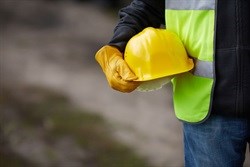
He says that one of the most common mistakes that inexperienced property investors make is to underestimate the cost of redevelopment or refurbishment. Local property developer, Dawie Swart - who most recently worked on the upgrade to the Pals building (Cape Town) which forms part of a wider upgrade scheme known as the Salt River Village Upgrade Project, an official World Design Capital 2014 project - agrees that it is easy to over capitalise and find yourself in a position with a lower yield than what the building had prior to redeveloping, if the necessary precautions aren't taken.
Van Biljon says that the simplest way to avoid unnecessary costs is to make use of professional contractors and industry suppliers from the start of a refurbishment project. "For instance, hiring the cheapest possible contractors, such as builders and architects, may seem economical at first, but it can potentially turn out to be much more expensive in the long run. A professional architect is qualified to not only check a building for structural defects, but is also able to determine whether the structure had been built with all the necessary planning permissions. A sudden order from the local authorities to fix the non-compliance of the original builder can be ruinously expensive."
He adds that in terms of redevelopment plans, strict compliance with the local regulations is advised. "Flouting building regulations is similar to not paying your tax - while you can avoid it for a while, in the end it always comes back to bite you."
Another aspect to consider carefully is the existing tenants in a building. "If their leases do not have a redevelopment clause, which obliges them to cooperate with your renewal of the building and to sign new leases afterwards, you may end up being beholden to a tenant who simply refuses to budge," says van Biljon.
A meticulous inward look at the building is crucial, but it is often not enough. Van Biljon says that a redeveloper also needs to look outwards towards the market in which the building is situated and only if demand for space is strong, should the addition of new lettable units be considered.
Swart adds that when identifying a suitable location, investors should seek areas that already have a couple of buildings being upgraded, or ones that have plans in the pipeline. "Areas that are part of an Urban Development Zone are also preferable, as this offers a tax incentive that allows you to expense your development costs similar to depreciation. This however only works if your intention is to keep the property for the longer term," says Swart.
Van Biljon says another very common mistake that redevelopers make is over-calculation, instead of conservative projections. "When expanding a building's rental space, investors assume that all the new "gross lettable area" will be fully occupied and tend to calculate their rental rate per extra gross lettable area versus the cost, and these returns tend to look fantastic.
"However in reality, this extra space may not be filled and they end up bearing the costs. Over-optimistic redevelopers also tend to make the mistake of calculating the revenue potential of a building at the maximum rental rates for the area."
When redeveloping a shopping or business complex, van Biljon advises a good balance between the anchor tenant and smaller tenants is maintained. "If you try to build too many units for smaller businesses, which tend to be less reliable and stable than the anchor, some of the space will end up in dead corners."
Van Biljon advises that making a building attractive does not have to be expensive. "A simple thing like tiling the toilets of an industrial building can give the building an edge. Features such as fibre-optics, a facility for electricity generators and security infrastructure, will also enable you to offer the higher end of the rental rates for the specific area, but investors must be careful not to over-capitalise by inserting such features," concludes van Biljon.